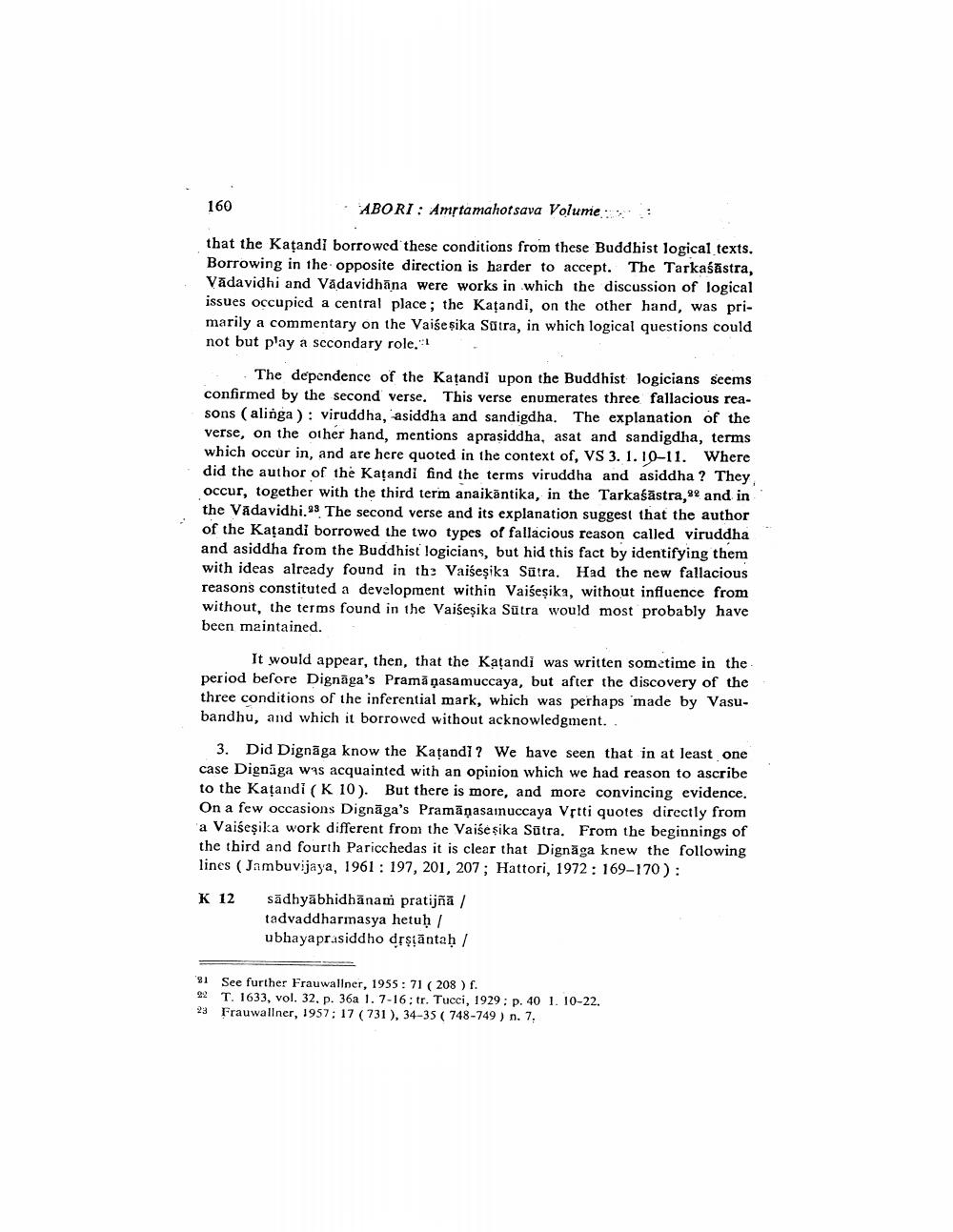________________
160
• ABORI: Amstamahotsava Volume
:
that the Kațandi borrowed these conditions from these Buddhist logical texts. Borrowing in the opposite direction is harder to accept. The Tarkaśāstra, Vădavidhi and Vadavidhāna were works in which the discussion of logical issues occupied a central place; the katandi, on the other hand, was primarily a commentary on the Vaise șika Satra, in which logical questions could not but play a sccondary role,
The dependence of the Kațandi upon the Buddhist logicians seems confirmed by the second verse. This verse enumerates three fallacious reasons (alinga ) : viruddha, asiddha and sandigdha. The explanation of the verse, on the other hand, mentions aprasiddha, asat and sandigdha, terms which occur in, and are here quoted in the context of, VS 3. 1.10-11. Where did the author of the Katandi find the terms viruddha and asiddha ? They occur, together with the third term anaikāntika, in the Tarkaśāstra,32 and in the VĀdavidhi. The second verse and its explanation suggest that the author of the Katandi borrowed the two types of fallacious reason called viruddha and asiddha from the Buddhist logicians, but hid this fact by identifying them with ideas already found in th: Vaiśesika Sūtra. Had the new fallacious reasons constituted a development within Vaiseșika, without influence from without, the terms found in the Vaiseșika Sūtra would most probably have been maintained.
It would appear, then, that the katandi was written sometime in the period before Dignāga's Pramāṇasamuccaya, but after the discovery of the three conditions of the inferential mark, which was perhaps made by Vasubandhu, and which it borrowed without acknowledgment..
3. Did Dignāga know the katandi? We have seen that in at least one case Dignāga was acquainted with an opinion which we had reason to ascribe to the Kațandi (K 10). But there is more, and more convincing evidence. On a few occasions Dignāga's Pramāṇasainuccaya Vrtti quotes directly from a Vaiśesika work different from the Vaise sika Sutra. From the beginnings of the third and fourth Paricchedas it is clear that Dignäga knew the following lines (Jambuvijaya, 1961: 197, 201, 207; Hattori, 1972: 169-170):
K 12
sādhyābhidhānam pratijñā / tadvaddharmasya hetuḥ / ubhayaprasiddho drsantaḥ /
81 See further Frauwallner, 1955: 71 ( 208 ) f. 22 T. 1633, vol. 32, p. 36a 1. 7-16: tr. Tucci, 1929: p. 40 1. 10-22. 23 Frauwallner, 1957; 17 (731), 34-35 ( 748-749 ) n. 7,




